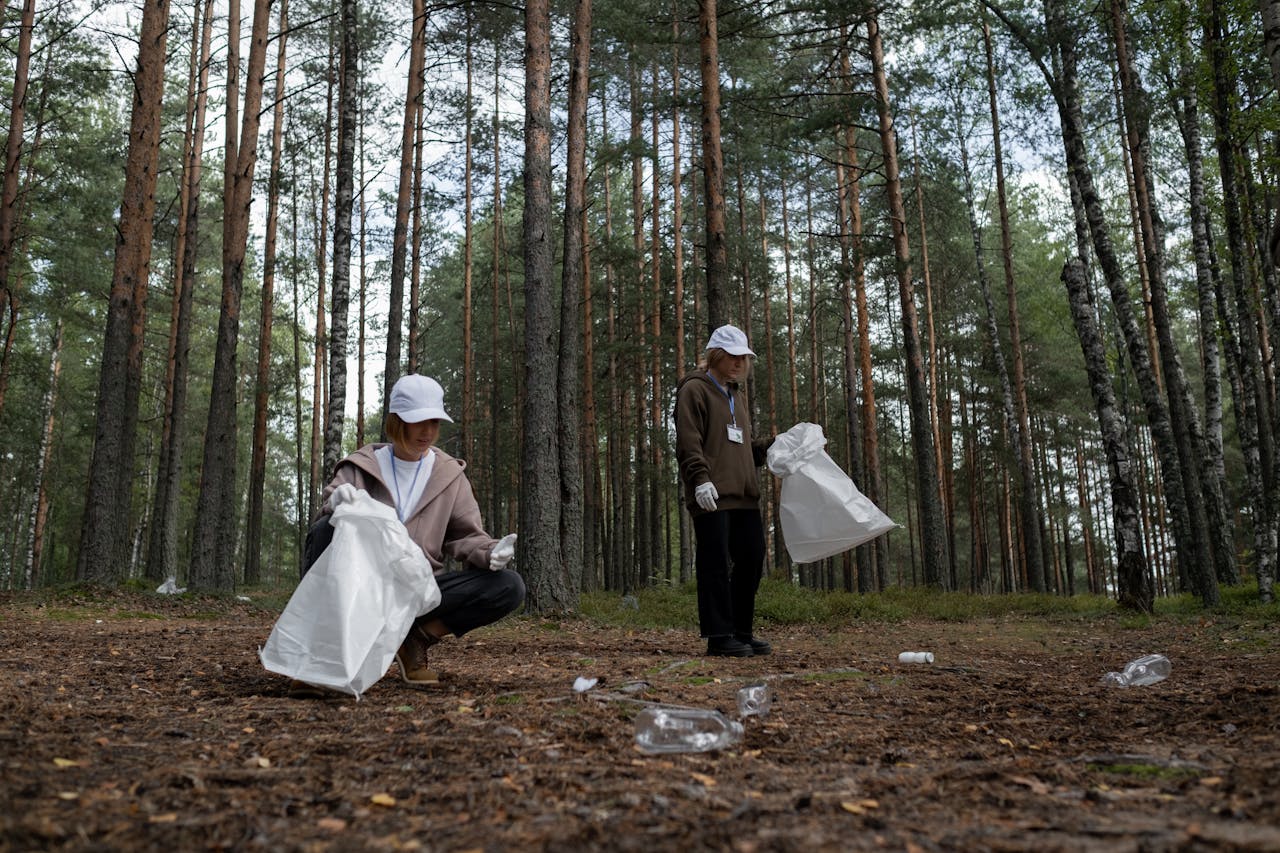
Body + Mind is reader-supported. We may earn an affiliate commission when you buy through some of the links on our site.
If you’ve stepped over a crumpled fast-food wrapper on your morning walk or dodged an overflowing trash bin at your neighborhood park, you’ve probably asked yourself, “Why doesn’t someone do something about this?”
Here’s the truth — someone probably has. Across the United States, community-led initiatives are quietly but powerfully tackling the twin problems of litter and public health. Some focus on cleanup, while others build habits, systems or social pressure to prevent messes before they happen. A few manage to do both.
Even with the best intentions, not all programs thrive. What makes some succeed while others fizzle out? These three community strategies are success stories that can teach you how to create your own litter programs. Unpack how they’re helping people find ways to reduce litter in communities across the country.
In cities like Detroit and San Diego, the Love Your Block program has become a catalyst for change without requiring big budgets or massive staffing. This initiative offers small grants to neighborhood groups that want to reduce social decay, clean up litter and beautify their block.
In Detroit, residents have used the grants to fund everything from alleyway cleanups to turning dumping grounds into pocket parks. They receive supplies like mulch, gloves and trash pickers — and more importantly, they get decision-making power. The city supports them, but the ideas come from within the neighborhood.
San Diego’s program supports local cleanup days, trash mural projects and even neighborhood picnics that double as awareness campaigns. The combination of litter collection and celebration helps create social spaces that shift local norms in a way that sticks.
Why does this model work?
You’ve seen the signs. Sometimes, they name a family, a company or a club. They’re part of the Adopt-A-Highway program, which began in Texas in the 1980s and has since spread nationwide. Businesses adopt a 2-mile highway section for a commitment of three years for regular cleanup.
The idea is simple — individuals, businesses or organizations take responsibility for keeping a stretch of highway litter-free. In return, they get signage recognition and the satisfaction of making a visible difference.
However, the program isn’t without roadblocks.
Some participants drop out after the first cleanup when they realize how hard it is to keep an area clean long term. Others sign up for the PR benefits but rarely follow through. In some states, restrictions on who can “adopt” a highway segment have led to controversy, such as when hate groups applied for participation.
Still, where it works, like in New Jersey, it’s a thing of beauty. The visibility of the signs creates a ripple effect. When drivers see names attached to clean roadways, it sets a norm — that these companies take pride in shared spaces. Everyone contributes, from large corporations like surgical manufacturers that adopted highway sections near Emerson, New Jersey, to support the local community to smaller businesses along the Texas interstate.
Even a symbolic effort can reduce littering and increase public ownership of the problem, enabling greater involvement to deliver solutions.
Omaha, Nebraska, is home to one of the longest-running environmental nonprofits in the country — Keep Omaha Beautiful. The most effective effort is a program called Eco-Schools USA that teaches students as young as 5 how to be environmental stewards.
KOB starts by making littering personal. Students conduct litter audits on their school grounds, learning where trash accumulates and why. They then work together to design and implement waste-reduction strategies, from better signage to peer accountability to organizing litter-free events.
Community programs like this avoid the “clean-it-up-and-go” trap. They build a future culture where throwing garbage on the ground is not just rude — it’s weird. They instill personal pride in people about their environment, encouraging actions like “adopt a spot,” where volunteers do a monthly cleanup for a specific area.
Why is this so effective?
Even with dozens of initiatives to choose from, many Americans still don’t get involved. This might be because they feel disconnected, as if the mess isn’t theirs. It could also be time poverty, where people want to help but work impossible hours. Poorly promoted initiatives can also fail because no one knows they exist. Finally, cynicism is a huge barrier, with many believing that litter always comes back, so why even try?
People may also believe that they should follow the example of everyone else, which can be a problem in a litter-ridden area. Education and community involvement are the only ways to break down these barriers. While it’s dramatic to say that there are almost more waste plastics than fish in the ocean, even eliminating single-use items can make a difference.
You can improve your world hygiene by finding out what’s already happening in your area. Check in with your city’s public works department, local Facebook groups or nonprofits. Join or start a cleanup effort and invite your block or building. Even a once-monthly litter walk can shift behavior.
Advocate for signage and trash cans, and petition your local council for better lighting in high-litter zones. Involve school kids, educate them and know they take home what they learn.
The road to litter reduction isn’t always a broad highway, but each person who helps ensures their world becomes cleaner, more hygienic and safer for all. Working together on litter management unites communities and, when repeated and visible, can lead to major cultural shifts.
Your email address will only be used to send you our newsletter, and at any time you may unsubscribe. For more information, see our Privacy Policy.